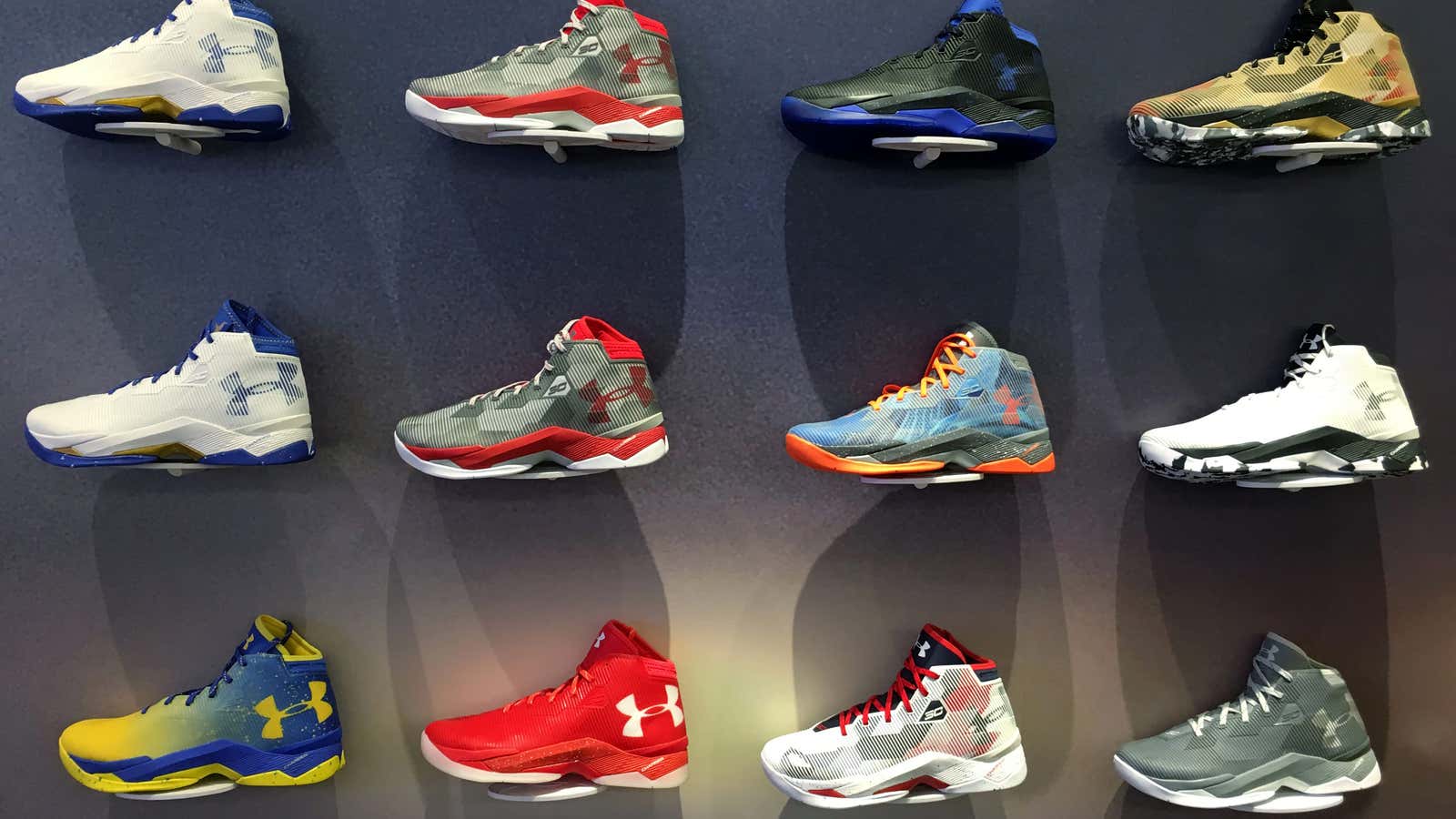In just over 20 years, Under Armour has grown into the third-largest sportswear brand in the US. But unlike its two larger rivals, Nike and Adidas, it’s still mostly an apparel business. Footwear makes up only one-quarter of its sales.
In a sense, this is less of a problem than a growth opportunity. As Nike and Adidas have proved, there’s a lot of money to be made in sneakers, meaning there’s plenty of runway left for Under Armour to extend its long streak of astounding profit growth. And indeed, it’s been building out its footwear business with the ambition of becoming a real competitor to the sneaker giants.
But Under Armour’s shoe sales are suddenly stumbling.
On April 27, the company reported that footwear sales grew just 2% last quarter, a dramatic slowdown from the 64% growth in the same quarter last year.
“We don’t like it and we don’t accept it,” founder and CEO Kevin Plank said on a call with investors.
The trend isn’t good for the brand’s marquee signature sneaker with NBA star Stephen Curry. Plank acknowledged that its latest release, the Curry 3, saw a softer reception among consumers than expected, leading to widespread markdowns.
It’s not just the Curry series that’s suffering. Across the industry, sales of basketball, running, and other performance shoes have been dropping steadily, while shoppers are instead scooping up retro and sports-inspired casual sneakers. And Under Armour is struggling to get people to buy its products for looks rather than just performance.
The brand is also hurting from the string of bankruptcies that have hit US sporting goods stores, a major sales channel for the company. A new partnership with department store Kohl’s hasn’t quite offset the loss—a recent research note from UBS found signs that the Kohl’s launch was causing an increase in markdowns while doing nothing to elevate the image of Under Armour’s brand.
Under Armour knows it needs to up its fashion game in clothing and footwear to fulfill its plan of becoming a lifestyle brand and not just a performance one. “We just need to make beautiful products, we get it,” Plank said on the call.
But it also needs to get people to perceive it as a premium brand if it wants to compete with Nike and Adidas. New research from Credit Suisse suggests Under Armour hasn’t been selling its footwear in a way that furthers that goal. Its premium products were widely available at four large US retailers, undermining any aura of exclusivity they might have.
It’s part of Plank’s job, of course, to maintain confidence in his brand, and he spoke optimistically about footwear’s prospects for the rest of the year. The company has a number of new releases in the pipeline and has been investing heavily in connected footwear, which Plank describes as a potential “quantum leap” for the sportswear industry.
But Under Armour’s footwear business is facing a tough road ahead.
